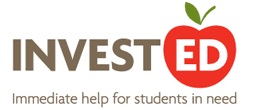This is the latest post from our word-nerd-erific inter, Vicki.
I have a love hate relationship with the word really. There are times when it is great.
Thank you very much.
Thank you, really.
Both sentences use an intensifier on “thank you” but the sentence with “really” feels more, well, real. I like that the thing it is highlighting is the authenticity of the sentence. There are many times when really is a fabulous word choice, but I have two issues it.
First, I over use it. Grossly. I annoy myself with how often I say “really.” To deal with this problem I search for every instance of the word really when editing and make sure it needs to be there. It’s at the top of my editing checklist.
The other issue I have is something I learned while editing it out. Really, like other intensifiers, often hides vagueness. As the term implies, we use intensifiers when we want to make a statement more (you guessed it) intense. However, if the statement needs more intensity, it deserves more than just an extra word slapped on. In these instances, figure out why you need to make your words intense. Is there a more specific word or do you need to elaborate? I’m all for parsimony, but sometimes you need a few more words to make your point.
Let’s revisit our example from above and look at the term “Thank you.” Imagine you’re thanking a new volunteer at your organization’s soup kitchen.
Thank you. We were able to feed fifty more people because you helped today. The kindness and patience you gave our clients show that you share the values that motivate us all in this work. I know Penny appreciated your help with that tray. She hesitates to ask so it was sweet of you to jump in and offer assistance.
There are no intensifiers in that version, but it has a stronger impact because I’m showing the connection to the mission and core values as well as giving some personal detail.
Look for places where you are using intensifiers in your own writing. How many can you replace by being more specific?
Looking for more tips on “Thank you?” Erica has a few posts on the topic. This one is my favorite.
Thinking of creating your own list of things to check for when editing? You may enjoy Tessa’s post on editing checklists.



 I’ve been thinking about the concept of “engagement” a lot lately and boy do I have some opinions on thank you notes that are engaging (or not), which I shared in a
I’ve been thinking about the concept of “engagement” a lot lately and boy do I have some opinions on thank you notes that are engaging (or not), which I shared in a 

